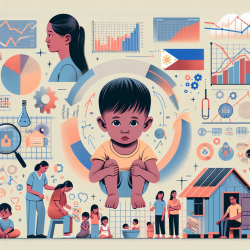Introduction
In the field of speech-language pathology, data-driven decisions are crucial for creating effective therapeutic interventions, especially for children. The research article "Mapping tobacco industry strategies in South East Asia for action planning and surveillance" provides a comprehensive framework that can be adapted to enhance our understanding and strategies in online therapy services. Although the focus of the original research is on tobacco industry strategies, the methodologies and insights can be translated into the realm of speech-language pathology to improve service delivery and outcomes for children.
Understanding Concept Mapping
The research utilized a structured conceptualization methodology known as concept mapping. This participatory approach combines group processes with statistical analysis to create a visual representation of complex ideas. In the context of online therapy, concept mapping can be used to identify key areas of intervention, track progress, and develop customized therapy plans for children.
Implementing Concept Mapping in Online Therapy
Speech-language pathologists can implement concept mapping by following these steps:
- Brainstorming: Collaborate with colleagues to generate a list of potential therapy strategies and interventions that could benefit children in online settings.
- Sorting and Rating: Organize these strategies into categories based on their importance and feasibility, similar to the tobacco industry strategies outlined in the research.
- Data Analysis: Use statistical tools to analyze the sorted data, identifying patterns and clusters that can guide therapy planning.
- Map Generation: Create visual maps that depict the relationships between different strategies, helping therapists to prioritize and implement the most effective interventions.
Enhancing Outcomes for Children
By adopting concept mapping, online therapy providers can enhance outcomes for children by:
- Personalized Therapy Plans: Develop tailored therapy plans that address the unique needs of each child, ensuring more effective interventions.
- Improved Monitoring: Utilize the maps to track progress and make data-driven adjustments to therapy plans, leading to continuous improvement in service delivery.
- Collaborative Efforts: Foster collaboration among therapists, educators, and families to create a unified approach to supporting children's communication development.
Encouraging Further Research
The methodologies and insights from the research article provide a foundation for further exploration in the field of speech-language pathology. Practitioners are encouraged to conduct additional research to refine concept mapping techniques and explore their application in various therapeutic contexts.
To read the original research paper, please follow this link: Mapping tobacco industry strategies in South East Asia for action planning and surveillance.










